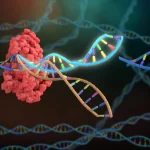
Revolutionizing Gene Editing: CRISPR Unleashes Precision Power with Targeted Delivery Breakthrough
February 1, 2024In a groundbreaking leap forward, CRISPR gene editing technology has taken a giant stride towards precision medicine with a newly unveiled targeted delivery system. Unlike conventional methods requiring the extraction and subsequent reintroduction of edited cells, this cutting-edge technique enables gene editing within the body, marking a significant advancement in the realm of therapeutic interventions.
The breakthrough delivery system, revealed in a study published on January 11 in Nature Biotechnology, hails from the laboratories of Jennifer Doudna at the University of California, Berkeley. Doudna, co-inventor of the revolutionary CRISPR-Cas9 genome editing technology, and her team have developed a method that encapsulates Cas9 editing proteins and guide RNAs within a membrane bubble adorned with monoclonal antibodies. These antibodies precisely target specific types of blood cells, paving the way for a programmable delivery mechanism that bypasses the need to decimate patients’ bone marrow and immune systems.
Jennifer Hamilton, a CRISPR researcher in Doudna’s laboratory, demonstrated the system’s efficacy by targeting immune system cells, particularly T-cells. In a groundbreaking experiment, live mice equipped with a humanized immune system were treated, transforming their T-cells into CAR T-cells—a crucial component in cutting-edge cancer treatments. The proof-of-concept experiment showcased the potential to use this novel delivery method to edit various cell types within living organisms, a significant stride towards potential human applications.
Hamilton explained the method’s uniqueness, stating, “Our approach involves multiplexing targeting molecules, having two or more targeting molecules on our particles that interact with their target cell somewhat like an AND gate in a computer.” This multiplexing strategy demonstrated enhanced delivery efficiency, showcasing the promise of this technique to precisely edit target cells.
The delivery method, termed “enveloped delivery vehicles” (EDVs), represents a departure from traditional approaches. While many gene therapies rely on viral envelopes or direct injection of Cas9 proteins, EDVs, derived from engineered enveloped viruses, offer greater flexibility in targeting specificity. Their outer envelopes can be adorned with multiple antibody fragments, ensuring highly specific targeting, a challenge faced by other gene delivery methods.
The research team’s ultimate goal is to refine the efficiency of EDV-mediated delivery, seeking to make CRISPR therapies more accessible and cost-effective. Doudna emphasized this vision in a recent essay, addressing the current inequities in expensive gene therapies. With the therapy for sickle cell disease projected to cost over $2 million per patient, the team aims to drive prices down by developing technologies allowing in vivo delivery of gene-editing therapies and streamlining manufacturing processes.
The study, authored by Hamilton, Doudna, and a team of researchers, marks a significant milestone in the quest for more accessible and affordable gene-editing therapies. Funded by institutions like the National Institutes of Health, the U.S. Department of Energy, and supported by grants, this groundbreaking research sets the stage for a new era in precision medicine, where the power of CRISPR is harnessed with unprecedented accuracy and efficiency.
















